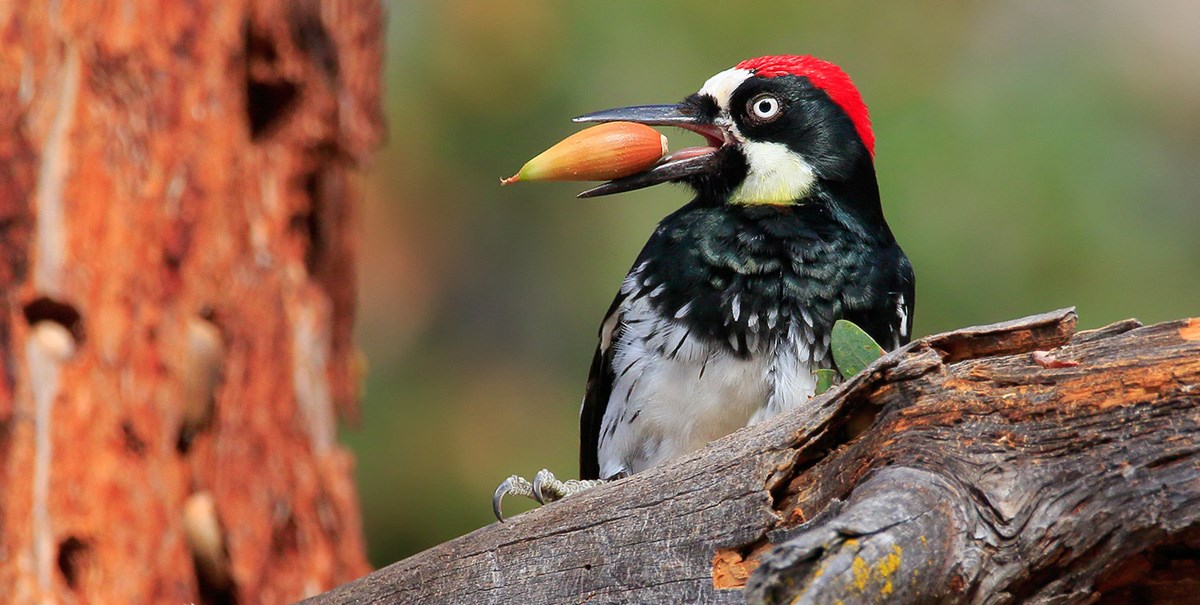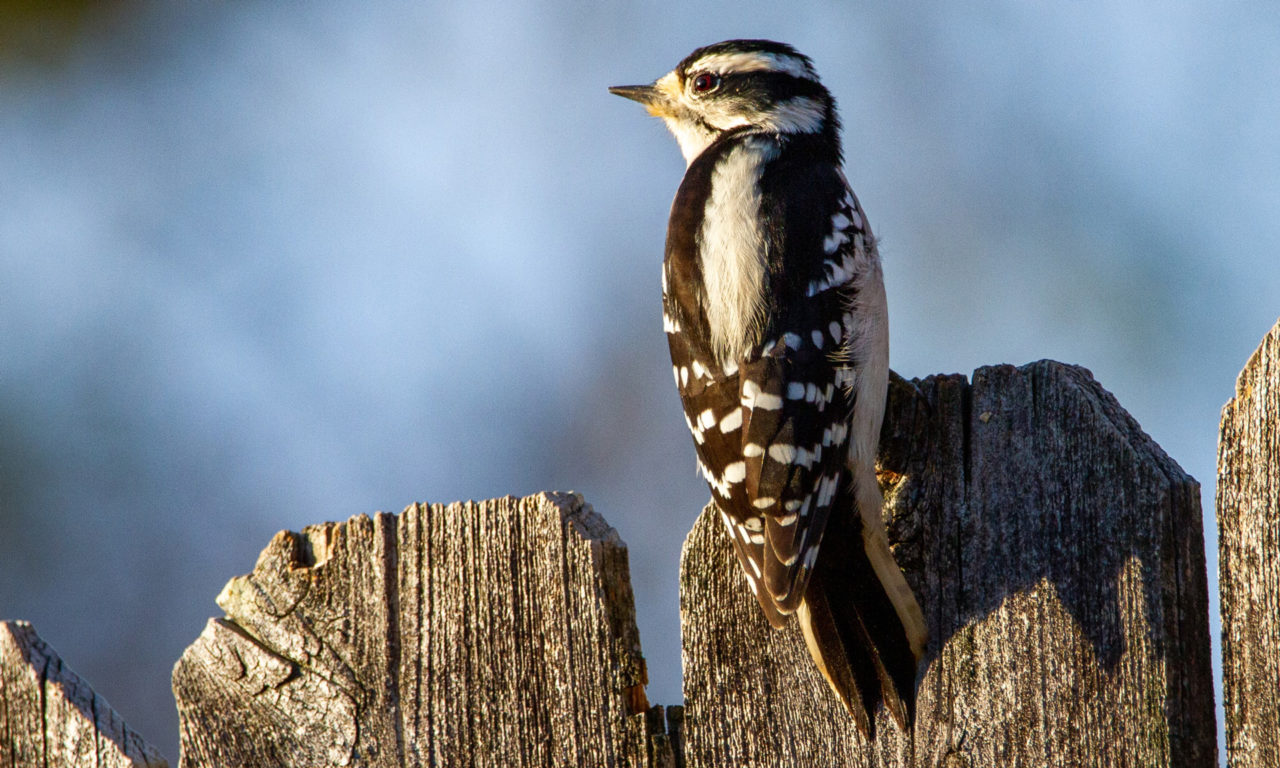Woodpeckers in Florida: Recognition Tips and Habitat Preferences
Wiki Article
Woodpeckers Unleashed: Checking Out the Wonders of These Skilled Tree Climbers
Woodpeckers, with their unique markings and balanced drumming resembling via wooded locations, hold an unique location in the avian globe - Woodpeckers in Florida. As we dive into the detailed details of woodpeckers' nesting routines, feeding techniques, and the ongoing preservation efforts to protect these amazing birds, a much deeper gratitude for their area in nature unfolds.Composition and Adaptations
When taking a look at the composition and adaptations of woodpeckers, one can observe exceptional functions that allow these birds to prosper in their specialized environmental specific niche. In addition, woodpeckers have zygodactyl feet, with two toes dealing with onward and 2 dealing with backwards, offering a company grip on tree trunks while they search for food or drum for interaction.Additionally, woodpeckers have a special tongue structure that is long, barbed, and sticky, enabling them to remove pests from holes in wood. This specialized adaptation permits woodpeckers to manipulate a food resource that is hard to reach to several various other bird types. In general, the composition and adaptations of woodpeckers showcase the exceptional transformative options that have allowed these birds to grow in their arboreal environment.
Drumming Behavior
Having actually discovered the makeup and adaptations of woodpeckers, the focus currently shifts to recognizing their drumming actions, a distinct aspect of their interaction and territorial screens. Drumming is an important form of interaction among woodpeckers, serving numerous functions such as developing regions, drawing in companions, and signaling alarm. Each woodpecker species has a distinct drumming pattern that assists individuals recognize members of their very own species and distinguish them from rivals or killers.Woodpeckers create drumming audios by rapidly pecking on resonant surface areas such as dead trees, utility posts, or also steel things, creating a series of rhythmic beats. The intensity and speed of drumming can differ based on the function; for circumstances, a rapid drumming sequence may symbolize hostility towards burglars, while a slower and softer drumming pattern can suggest courtship (Woodpeckers in Florida). In addition, woodpeckers might adjust the regularity and period of their drumming to share particular messages effectively
Nesting Routines
Discovering the nesting habits of woodpeckers reveals interesting understandings into their reproductive actions and environment selections. Woodpeckers are recognized for their unique nesting preferences, frequently digging deep into cavities in Get More Info trees to produce sheltered spaces for raising their young. These cavities serve not just as a nesting site however also as a secure sanctuary from predators and severe climate.Woodpeckers exhibit a high level of fidelity to their nesting sites, commonly going back to the very same area year after year. This behavior highlights the importance of suitable habitat availability for their reproductive success. The choice of a nesting website is vital for woodpeckers, with aspects such as tree varieties, elevation, and degeneration phase playing go now considerable functions in their decision-making process.
Remarkably, some woodpecker species are understood to excavate multiple cavities within their region, giving themselves with different nesting alternatives. This approach might work as a form of insurance versus prospective hazards or disturbances to their primary nesting website.

Feeding Techniques
Woodpeckers use a variety of specialized feeding methods to acquire their primary food sources. Among the most unique feeding habits of woodpeckers is drumming, which entails rapid pecking on trees to uncover insects beneath the bark. This drumming not just helps them find victim but likewise acts as a method of interaction with various other woodpeckers. Woodpeckers have strong, chisel-like beaks that allow them to pierce into wood easily. As soon as an opening is created, they use their long, barbed tongues to remove insects such as ants, beetles, larvae, and spiders. These tongues are coated with sticky saliva that assists trap the victim. Woodpeckers are also understood to excavate tooth cavities in trees to accessibility surprise insect larvae or sap. Some species, like the acorn woodpecker, store nuts in particularly developed openings called granaries. This calculated saving of food assists them endure throughout food deficiency durations. Woodpeckers are absolutely impressive in their feeding techniques, showcasing versatility and intelligence in procuring their nutrition.Preservation Efforts
Among the complex feeding techniques exhibited by woodpeckers, description the preservation initiatives focused on protecting these remarkable birds play a critical function in preserving their environments and populaces. Woodpeckers face various threats to their survival, consisting of environment loss due to logging, environment adjustment modifying their environments, and collisions with synthetic frameworks such as buildings and lorries - Woodpeckers in Florida. Guardians are proactively working to resolve these difficulties and ensure the long-term well-being of woodpecker species
Education and learning and public recognition campaigns are additionally essential parts of woodpecker conservation initiatives. By increasing understanding concerning the value of these birds in preserving healthy woodland communities, conservationists can amass support for habitat preservation efforts and promote liable land management techniques. With collaborative initiatives between scientists, policymakers, and regional areas, we can interact to protect a future where woodpeckers thrive in their all-natural habitats.
Final Thought

Report this wiki page